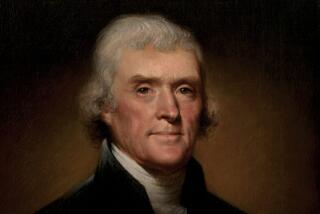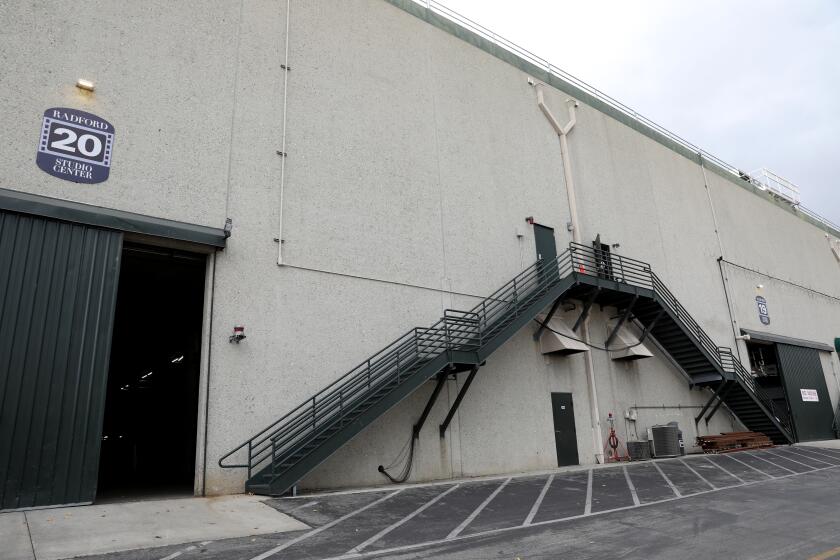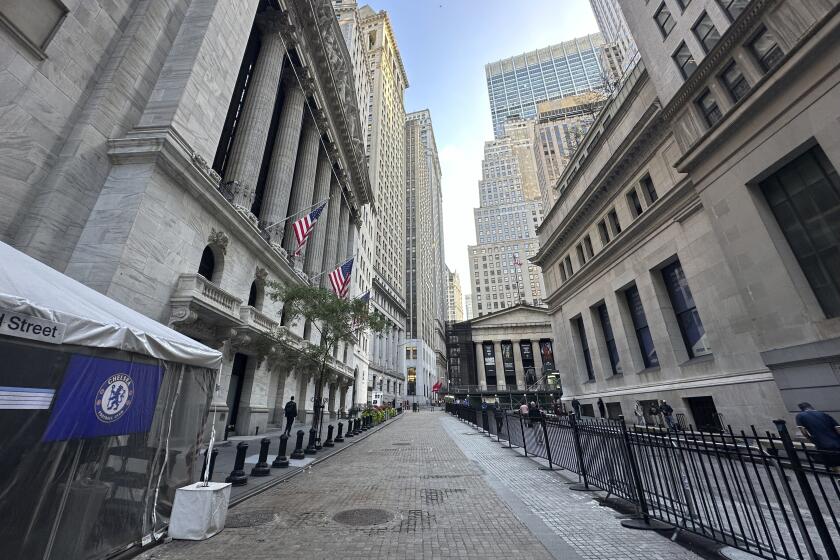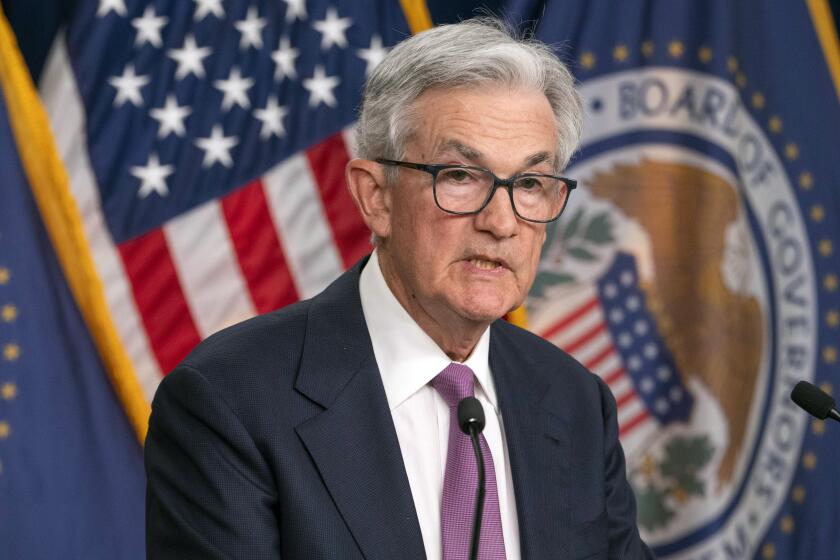Late Buying Spree Pushes Dow Up 22.33
The stock market was swept higher Wednesday by a late burst of buying, spurred by bargain hunting and the growing belief that interest rates will be eased.
The Dow Jones index of 30 industrials, down 16.18 on Tuesday, rebounded 22.33 to 2,632.58.
Advancing issues outnumbered declines by more than 3 to 2 in nationwide trading of New York Stock Exchange-listed stocks, with 926 up, 595 down and 465 unchanged.
Interest rates fell a bit in the Treasury bond market Wednesday.
Analysts said traders seemed to be looking ahead hopefully to the monthly report from the government today on the nation’s international trade position.
Advance estimates on Wall Street call for a September trade deficit of about $9 billion, down from $10.8 billion in August.
Aside from that, brokers said worries persisted about the recent weakening trend of corporate earnings.
Third-quarter profits, and early indications of likely fourth-quarter results, have contained numerous disappointments, stirring talk of a possible business slump in early 1990.
The Federal Reserve has relaxed its credit policy lately in an evident effort to cushion the impact of a slowdown in the economy. But some observers have questioned whether the Fed acted early enough or emphatically enough to stave off trouble.
Among the blue chips that contributed to the Dow Jones industrials’ gain, General Electric rose 1 1/4 to 56 3/4, American Telephone & Telegraph added 1/2 to 43 3/8, Procter & Gamble rose 2 3/8 to 129 1/2, Coca-Cola edged up 3/4 to 74 and Eastman Kodak gained 1/2 to 42 5/8.
Occidental Petroleum climbed 1 1/2 to 30 1/8. Armand Hammer, the company’s 91-year-old chief executive, described recent takeover speculation involving the stock as “ridiculous.”
IBP Inc., which is 51% owned by Occidental, added 1 1/8 to 15 5/8. Occidental said it turned down two offers earlier this year for its stake in the beef-processing concern.
Baker Hughes rose 1 1/4 to 24 1/4. The company reported higher operating income for its fiscal fourth quarter ended Sept. 30.
Among other energy issues, Chevron gained 2 to 63 5/8, Amerada-Hess rose 3/4 to 44 7/8, Texaco added 3/4 to 52 3/4, Schlumberger climbed 1 1/8 to 43 1/8 and Halliburton added 1 1/2 to 38 7/8.
M-A-Com, which discontinued its quarterly dividend, slipped 1/8 to 5 5/8, trading at 10-year lows.
Big Board volume rose to 155.13 million shares, against 143.17 million Tuesday.
Tokyo stocks posted record closing levels for the third consecutive session but closed below their day’s highs on selling by foreign brokers in heavy trading. The key 225-share Nikkei index rose 83.59 to a record 35,852.23.
Share prices fell in thin trading on the London Stock Exchange, undercut by disappointing British corporate earnings. The Financial Times 100-share index closed 11.3 points lower at 2,203.4.
Credit
Bond prices also rose, getting a lift from a new government report pointing to further weakness in the economy.
The Treasury’s closely watched 30-year bond advanced about 5/16 point, or $3.13 for every $1,000 in face value. Its yield declined to 7.85% from 7.88% late Tuesday.
Analysts said the release of a report that business inventories climbed 0.2% in September was partly responsible for the upturn in bond prices. The rise followed a revised gain of 0.4% in August.
The accumulation of goods on shelves and back lots rising faster than sales could be bad news for the economy. If inventories were to pile up excessively, it could mean cuts in production and a loss of jobs.
As the economy slackens, the chances increase that the Fed could lower interest rates to stimulate business activity.
In addition, bond prices benefited from the market’s “relief that the refunding was over,” said Kevin Flanagan, a money market economist at Dean Witter Reynolds Inc.
On Tuesday, the government completed its quarterly refunding with an auction of $10 billion in 30-year Treasury bonds. The Treasury had sold $10 billion in three-year notes last Thursday and $10 billion in 36-day cash management bills last Friday, bringing to market a heavy supply of new government issues that could have been difficult to absorb.
The federal funds rate, the interest on overnight loans between banks, was quoted late in the day at 8.50%, up from 8.438% late Tuesday.
Currency
The dollar ended higher in domestic trading against major foreign currencies after declining overseas.
Gold prices fell in New York after rising overseas. On the Commodity Exchange in New York, gold bullion for current delivery closed at $391.30, down $2 from late Tuesday. Republic National Bank of New York quoted a late bid of $390.90, off $1.60.
Ronald Holzer, a vice president and chief dealer for Harris Trust & Co. in Chicago, attributed the dollar’s gains in New York partly to “a small correction from yesterday’s selloff ahead of the trade figures.”
The Commerce Department is scheduled to release the merchandise trade figures for September today, and the market sentiment is that it would show a narrowing of the deficit to $8 billion to $9 billion.
However, Holzer said that if the report reveals further economic weakness, particularly by showing a decline in U.S. exports, the dollar could head lower. “The fundamentals are still working against the dollar,” he said.
Several recent economic reports have pointed to an economic slowdown, which spells bad news for dollar investors because it could signal lower interest rates. Lower rates tend to depress a currency.
In Tokyo, the dollar fell to 143.37 Japanese yen from 143.80 yen Tuesday. It traded at 143.45 yen in London and rose to 143.795 yen in New York from 143.05 yen late Tuesday.
The British pound traded at $1.5810 in London, unchanged from late Tuesday’s rate. In New York, the pound fell to $1.5803 from $1.5945.
Commodities
Prices of silver futures soared to six-month highs, while gold and platinum, the recent leaders of the surging precious metals group, fell.
On other commodity markets, prices of pork futures rose sharply amid talk of further food aid to Poland; grains and soybeans were mostly higher, and energy futures were mixed.
Silver futures settled 13 to 15.1 cents higher on New York’s Commodity Exchange, with the contract for delivery in December at $5.538 an ounce, the highest price for a near-month silver contract since May 12.
Gold finished $1.90 to $2.10 lower on the Comex, with December at $392.80 an ounce; platinum settled $5.20 to $5.30 lower on the New York Mercantile Exchange, with January at $520.40 an ounce.
Precious metals prices have risen broadly since Oct. 13, when a 190-point plunge in the Dow Jones industrials index triggered a rush of investment dollars to the perceived safety of the metals.
But the silver market has lagged behind gold and platinum, possibly because silver is in greater supply. From Oct. 13 through Tuesday, gold prices had risen 7.5%, platinum by 6.9% and silver by 4.9%.
Silver played catch-up on Wednesday, pushing its gains since Friday the 13th to 7.8%.
More to Read
Inside the business of entertainment
The Wide Shot brings you news, analysis and insights on everything from streaming wars to production — and what it all means for the future.
You may occasionally receive promotional content from the Los Angeles Times.






